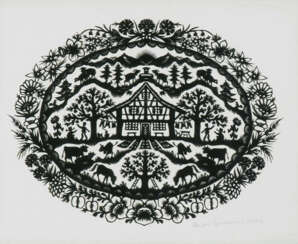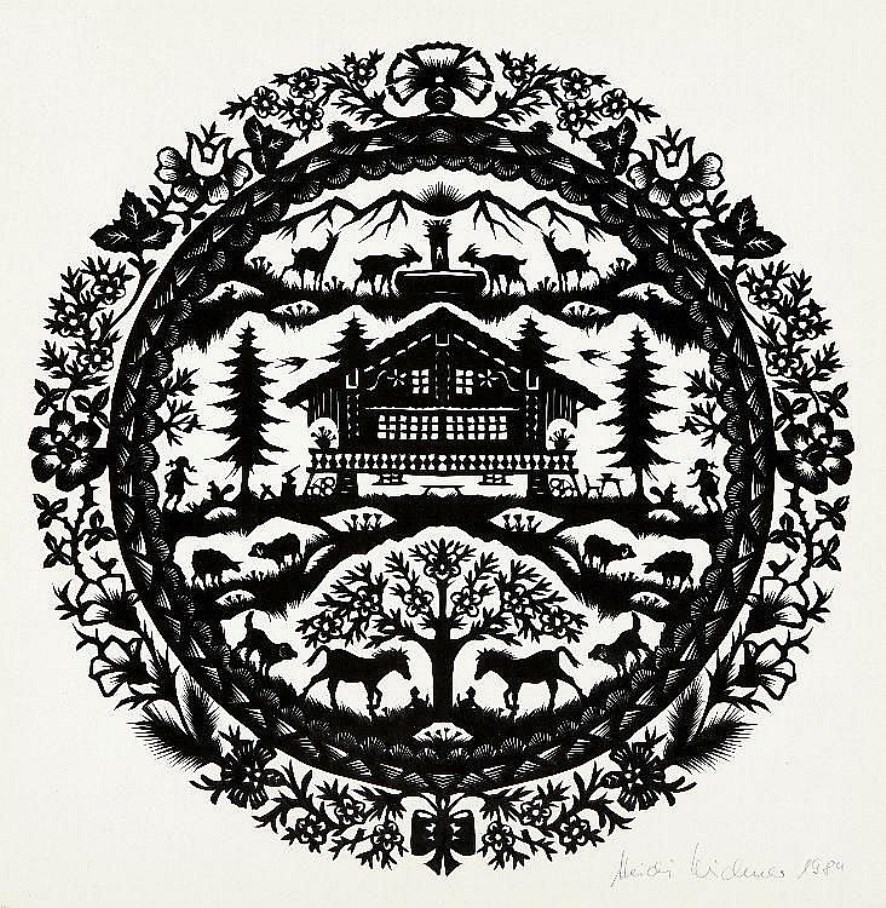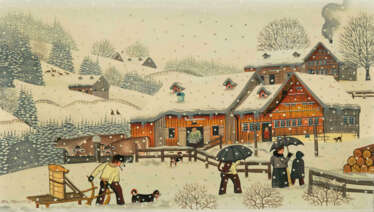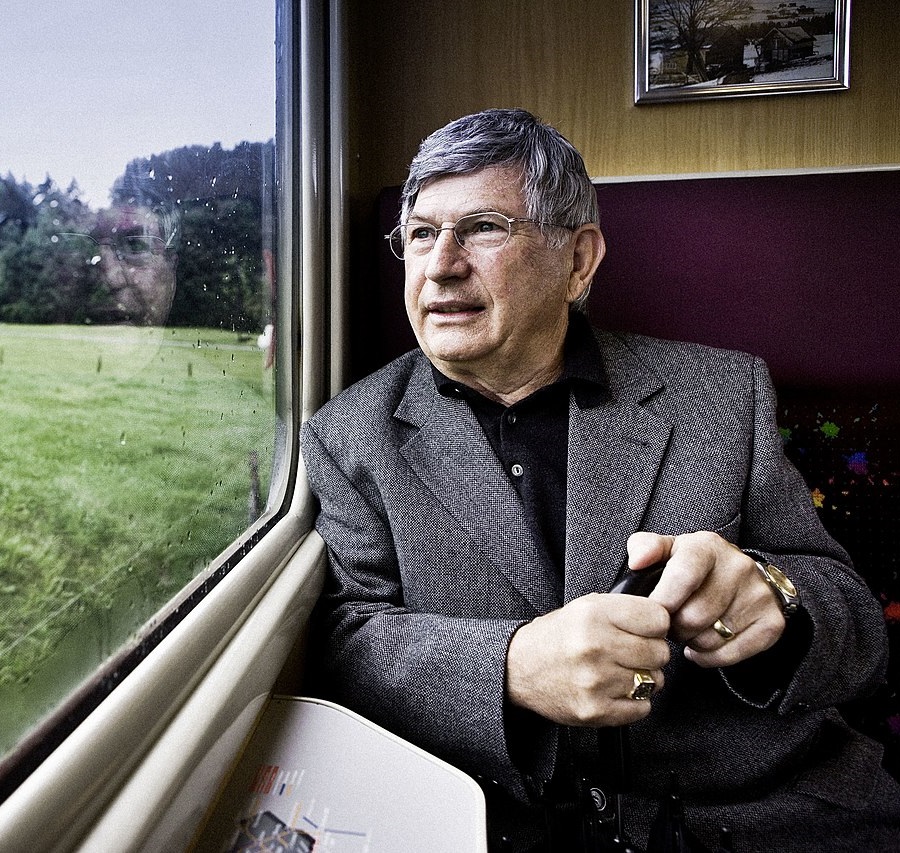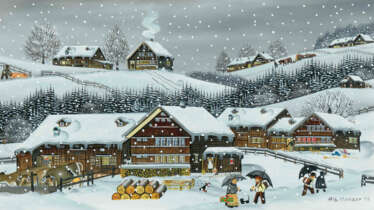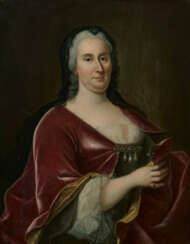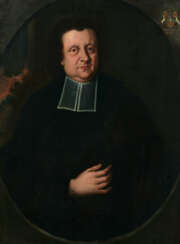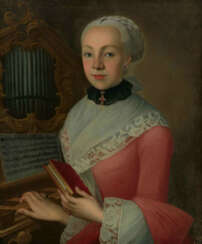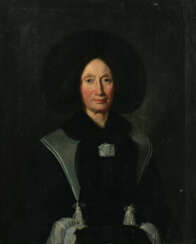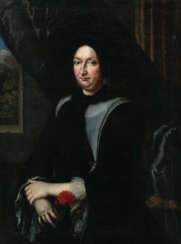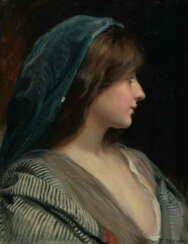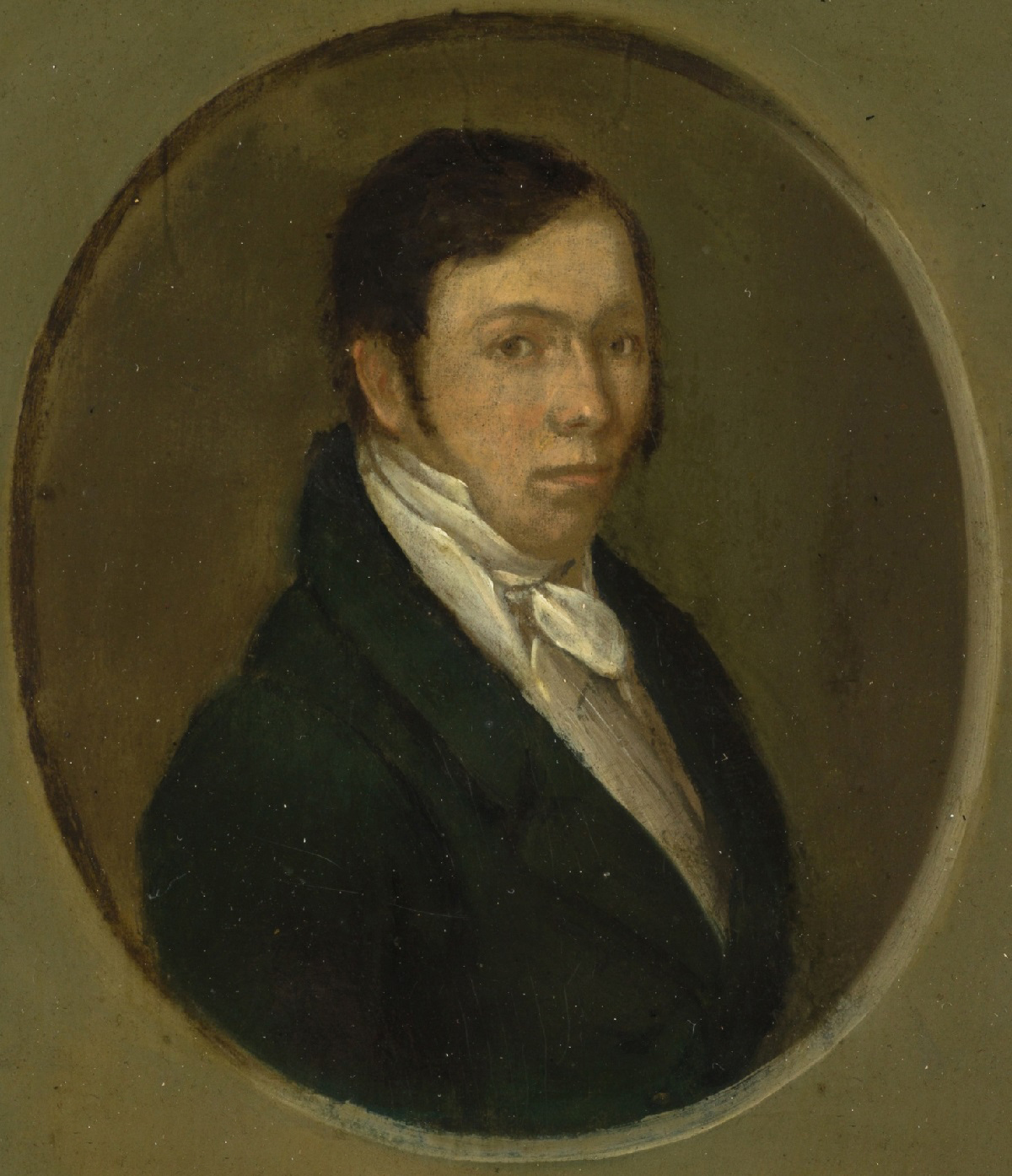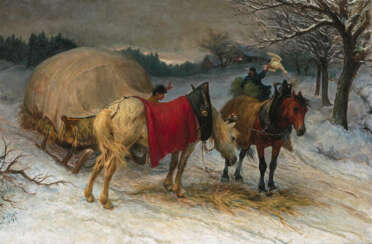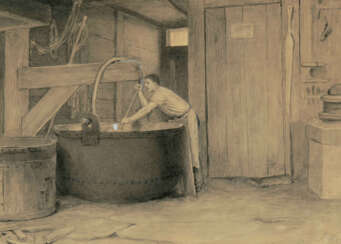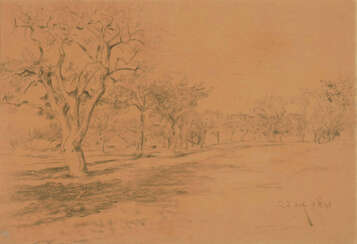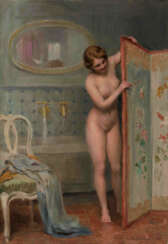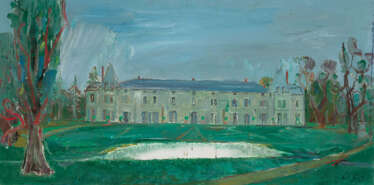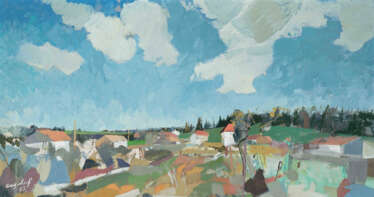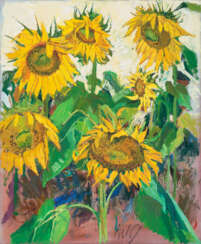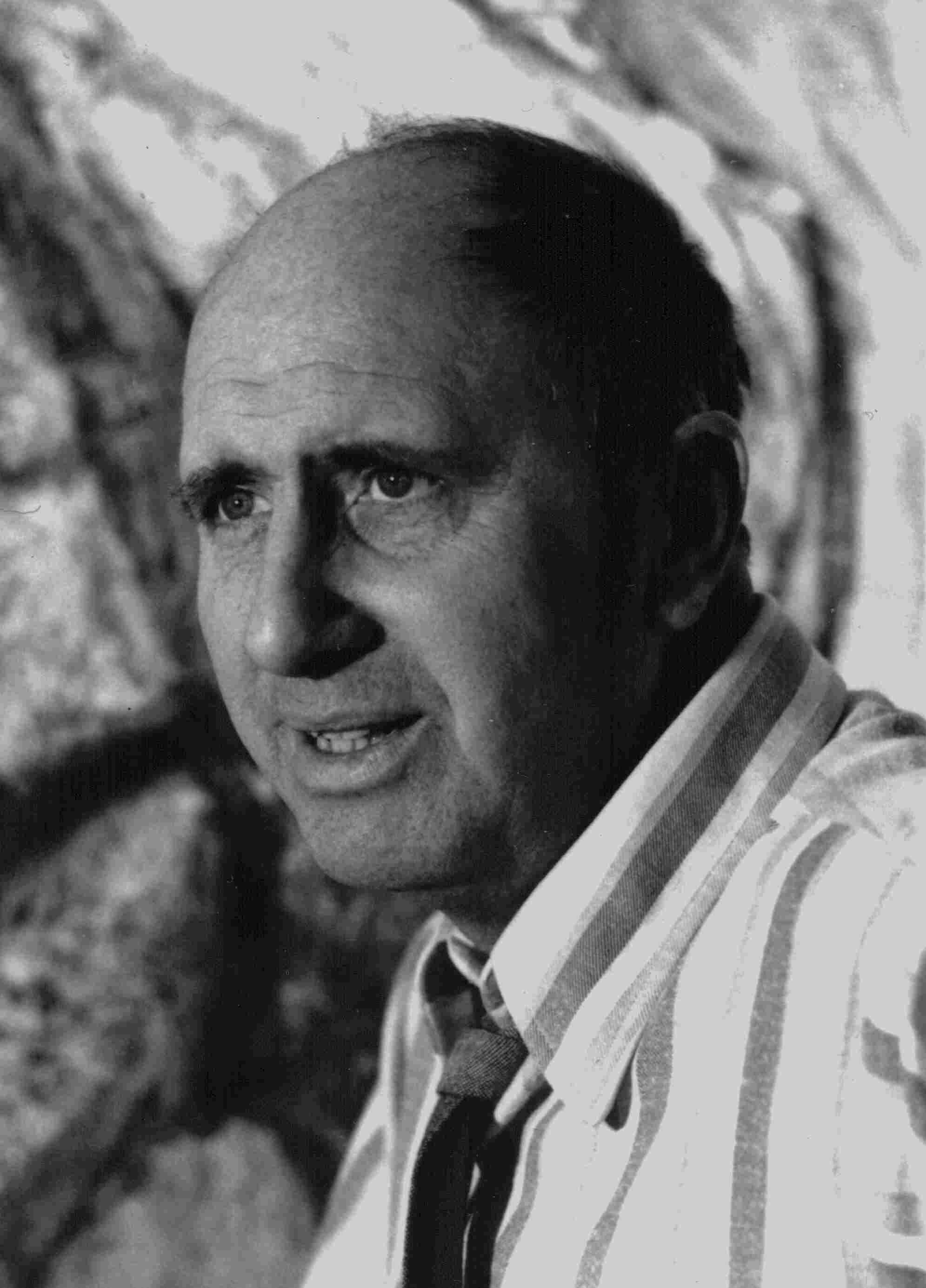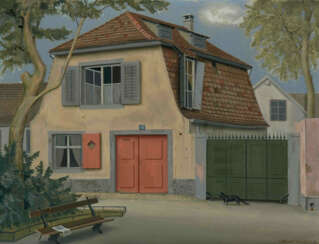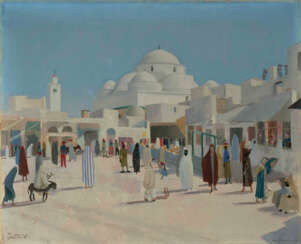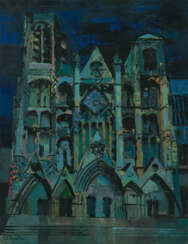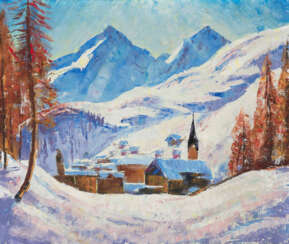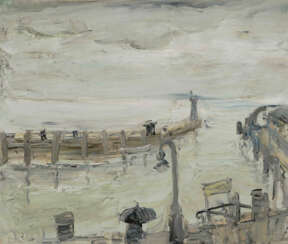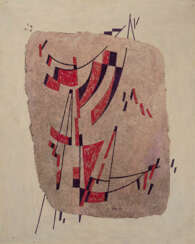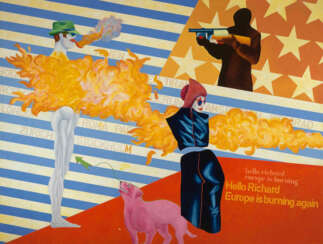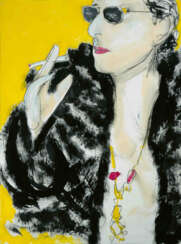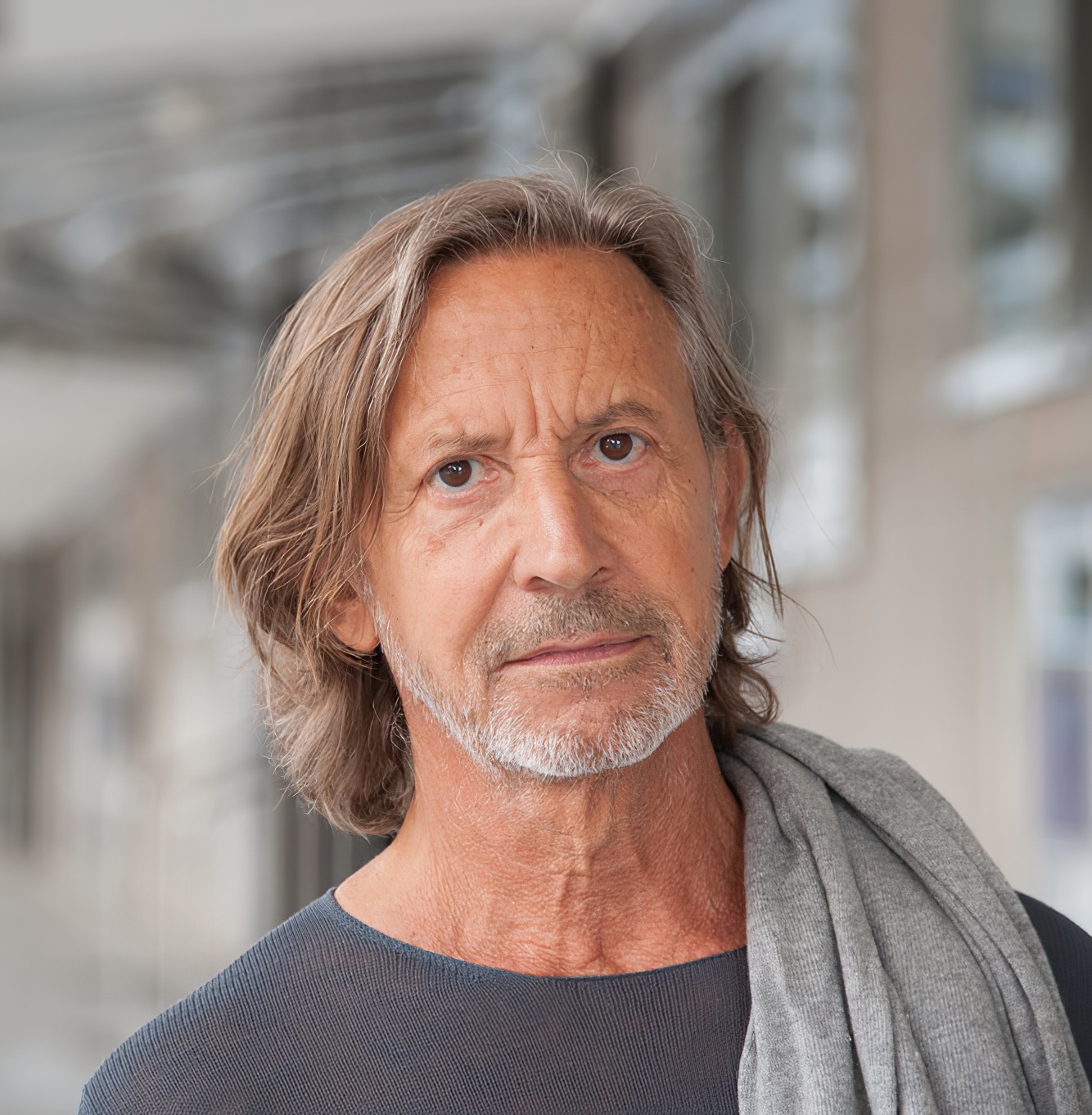
A170: Schweizer Kunst
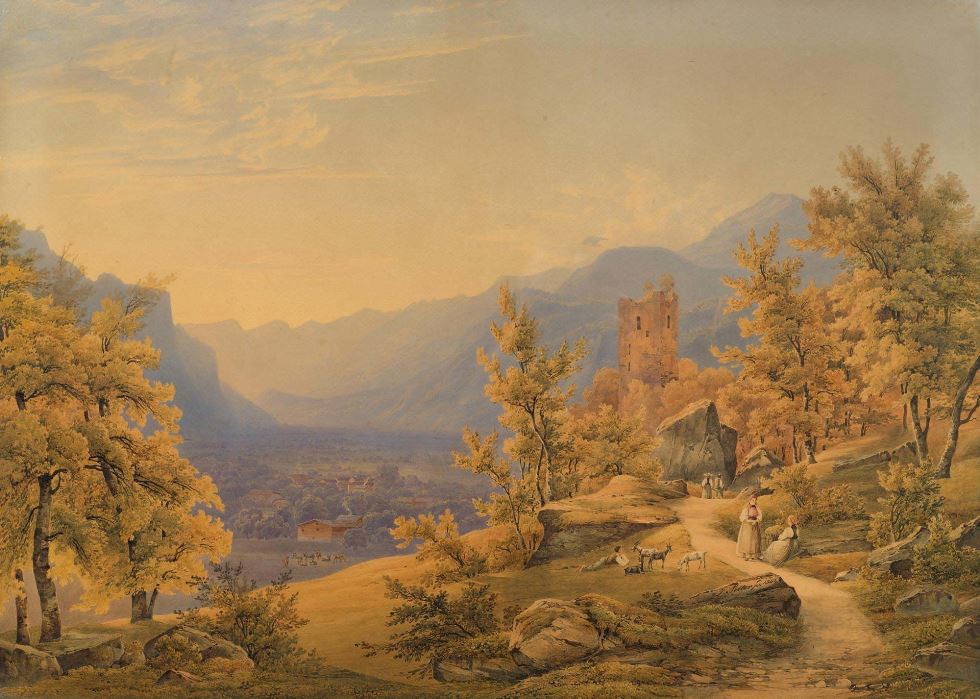
Jakob Suter was a Swiss watercolor painter and engraver.
Suter worked with etchings and engravings, but in 1833 he traveled to Rome, where he perfected his watercolor technique. Jacob Suter painted exquisite idyllic mountain landscapes, portraits of women in Swiss national costumes.
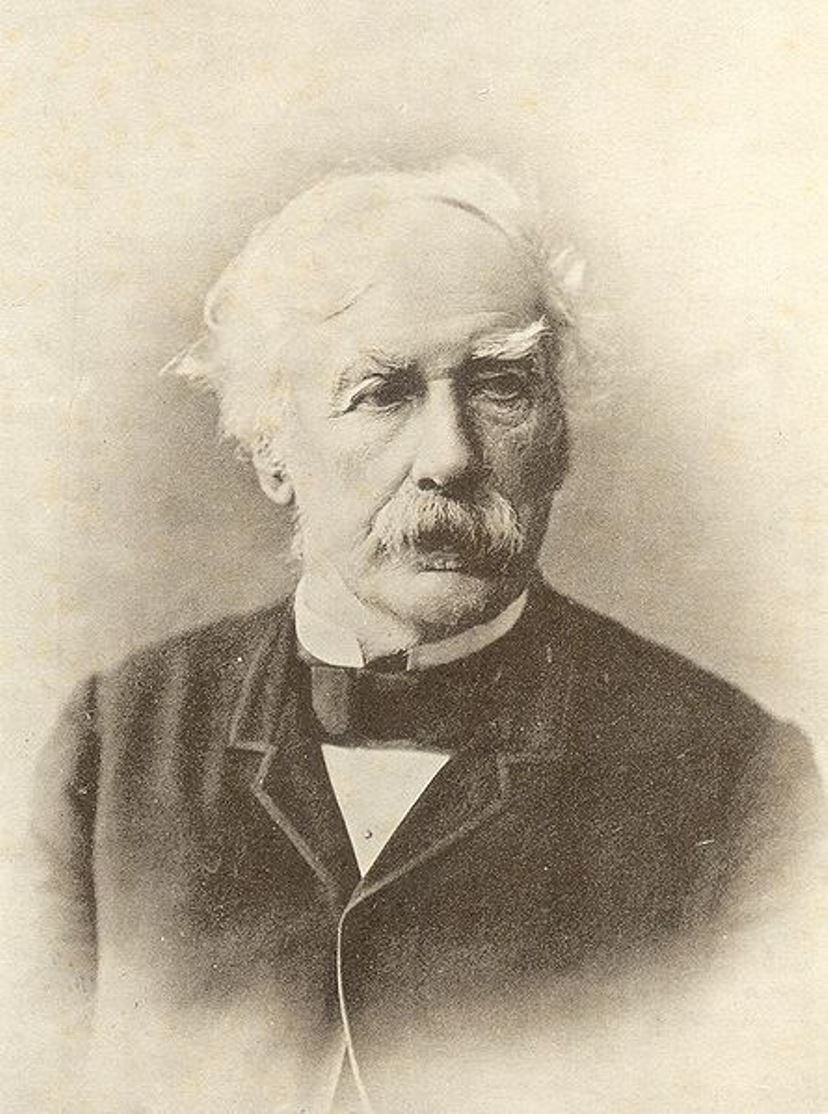
Salomon Corrodi was an Italian-Swiss watercolor painter.
At the age of twenty-two, Corrodi moved from Zurich to Italy, his parents' homeland, and took up the study of watercolor landscape painting in Rome with Jacob Suter (1805-1874). He traveled and painted landscapes extensively, and by the mid-19th century had become a recognized master of watercolor landscape painting as well as a teacher.
Salomon Corrodi lived a long and productive life, laboring until his death and producing many exquisite landscapes of coastal and mountain vistas as well as vedutas. Two of his sons, Herman and Arnold, also became artists.
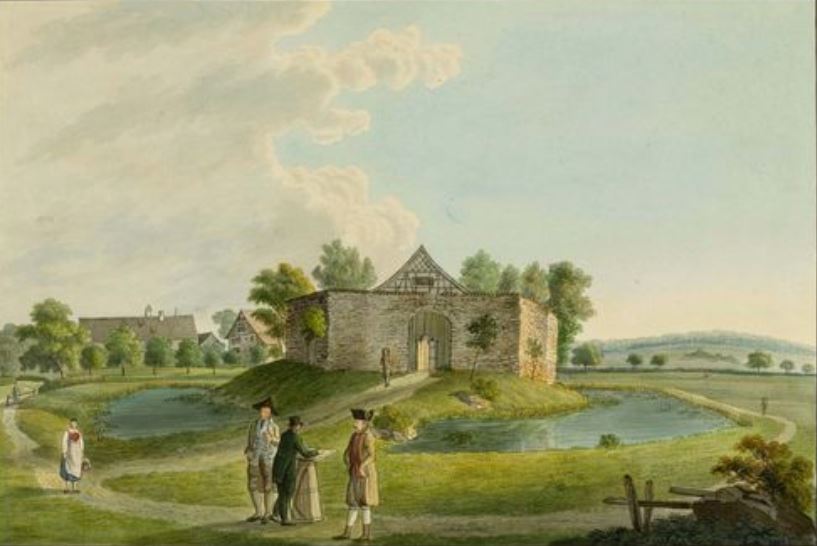
David Alois Schmid was a Swiss painter, draftsman and graphic artist.
David studied painting in Lucerne and at the Johann Heinrich Bleuler artists' colony in Feuertalen, in Zurich he worked on costume paintings. But he became known for his vedute paintings of landscapes and urban views of central and eastern Switzerland. Schmid also made watercolors.
Together with his brothers, the painters Franz Schmid (1796-1851) and Martin Schmid (1786-1842), he earned money by selling numerous gouaches and watercolor drawings of picturesque places in Switzerland to wealthy tourists. The engraver Franz Hegi (1774-1850) and others made engravings based on his paintings, many of which have survived to this day.
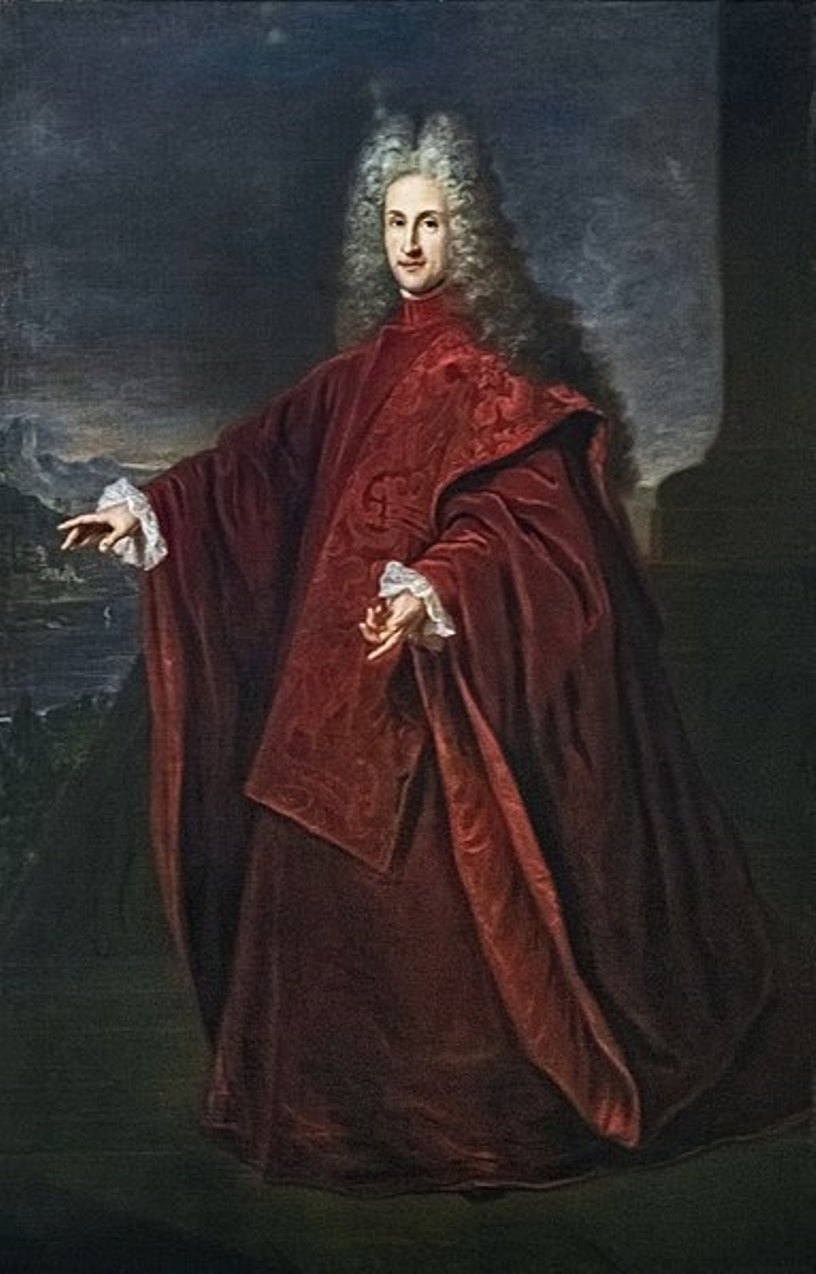
Pietro Uberti was an Italian Baroque painter who worked in Venice in the 18th century.
Uberti painted mainly portraits, including a series of portraits of lawyers and prosecutors for the Ducal Palace. Pietro Uberti was the son of the painter Domenico Uberti.
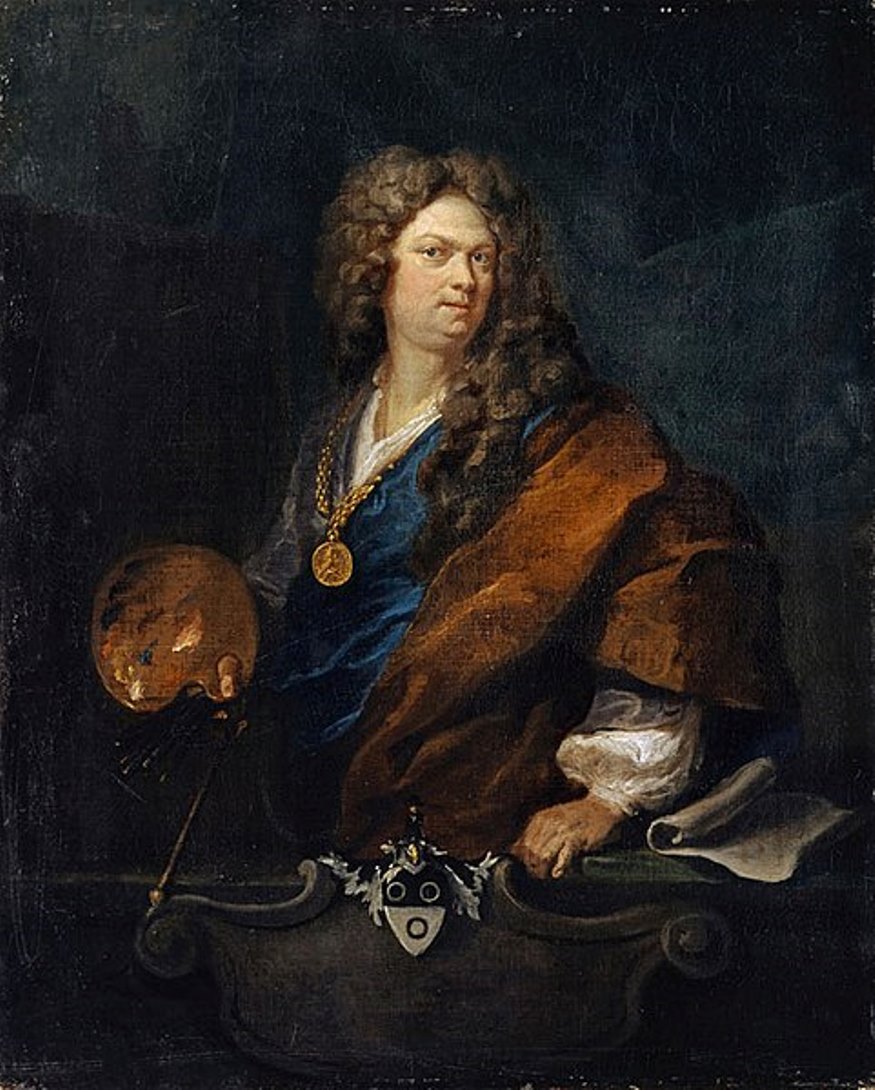
Johann Rudolf Huber the Elder was a Swiss painter and printmaker, as well as a statesman.
Huber studied painting with Basel and German masters, and in 1685 went to Venice, where he painted portraits. A few years later Huber entered the Academy of St. Luke in Rome, where he became a pupil of the famous Carlo Maratta. In 1693 the artist returned to Basel, where he was elected to the Grand Council of Basel and began to receive many prestigious commissions from the nobility; he was court painter to the Duke of Württemberg in Stutart. A very prolific painter, Huber painted many portraits of royalty during his lifetime.
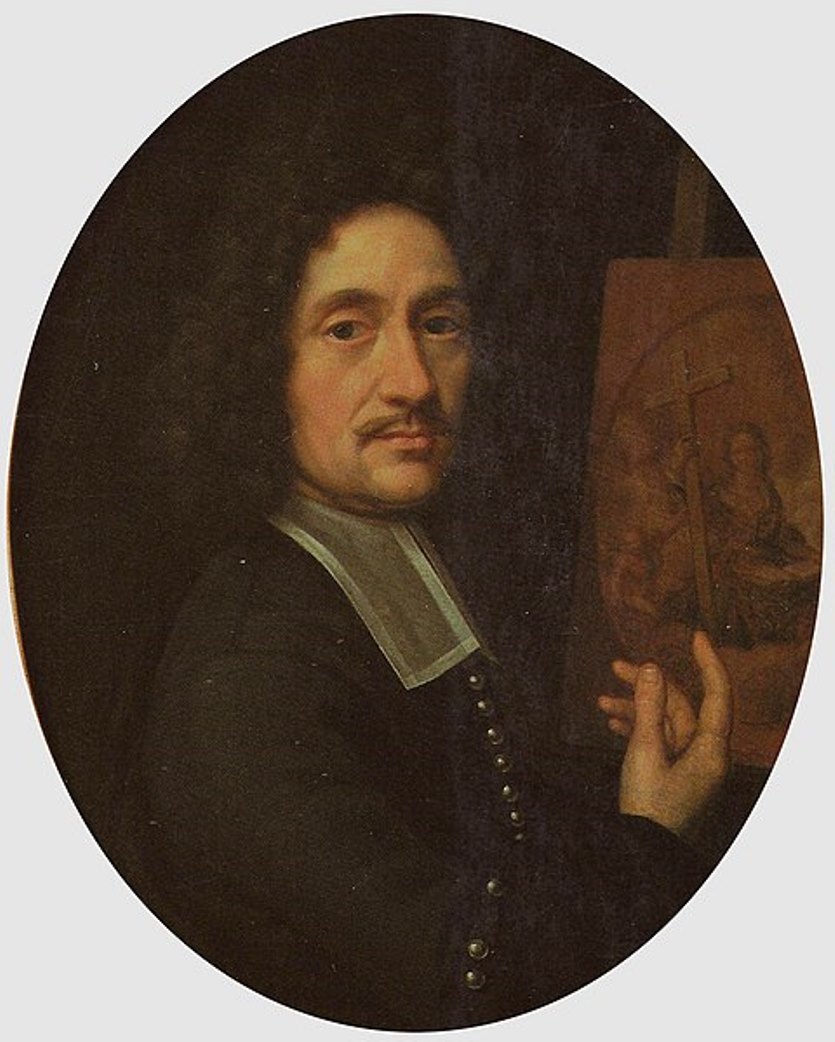
Johannes Dünz was a Swiss painter and representative of the Bernese Baroque.
Johannes Dünz studied in Bern under the painter Albrecht Kau (1616-1682). In the 1670s he was already painting portraits of noble townspeople and young representatives of the von Erlach and von Wattenville families in particular. He soon became the leading portraitist in these circles.
Dünz painted many portraits of Bernese patricians, leads and still lifes, as well as some remarkable group portraits. His work The Library Commission, in which both portraits and interior decoration are meticulously reproduced, is one of the most important group portraits of 17th-century Swiss painting. Johannes Dünz also possessed the skill to transform ordinary city vistas into spacious panoramic landscape paintings, paying particular attention to detail. And in his still lifes, he was sure to emphasize the four seasons, praising the labor of peasants and blessing the harvest.
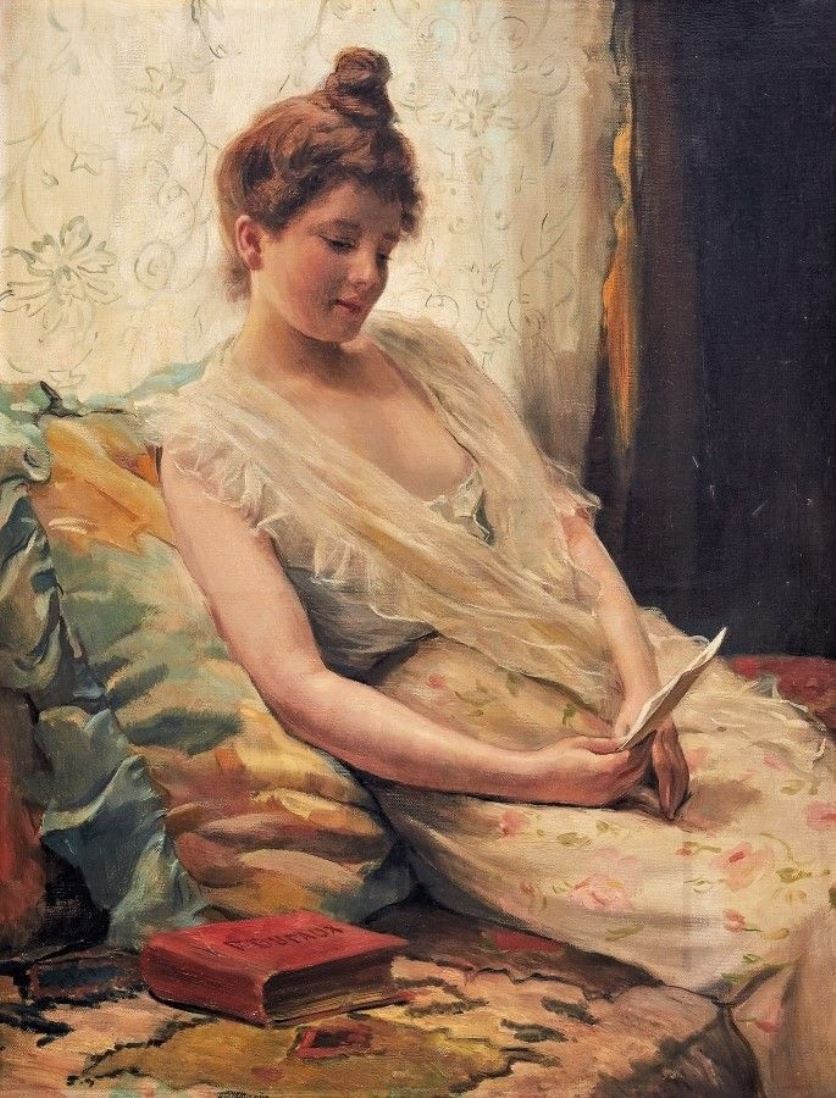
Auguste Frédéric Dufaux the Younger was a Swiss painter and sculptor.
Auguste's father, painter and sculptor Frédéric Guillaume Dufaux (1820-1872), taught him to draw, then he entered the Geneva School of Fine Arts, continued his studies in Paris and Florence.
Dufaux painted lovely female portraits in genre and intimate scenes, children playing, and many depictions of nude women, often near water. He lived in Paris from 1876 to 1891 and participated in the Salon des Artistes Français. From his travels in Egypt and Algeria, Dufaux brought back paintings of local exotic subjects. Dufaux also worked on a panoramic painting of the French Army's entry into Le Verrière and executed several sculptures of famous personalities.
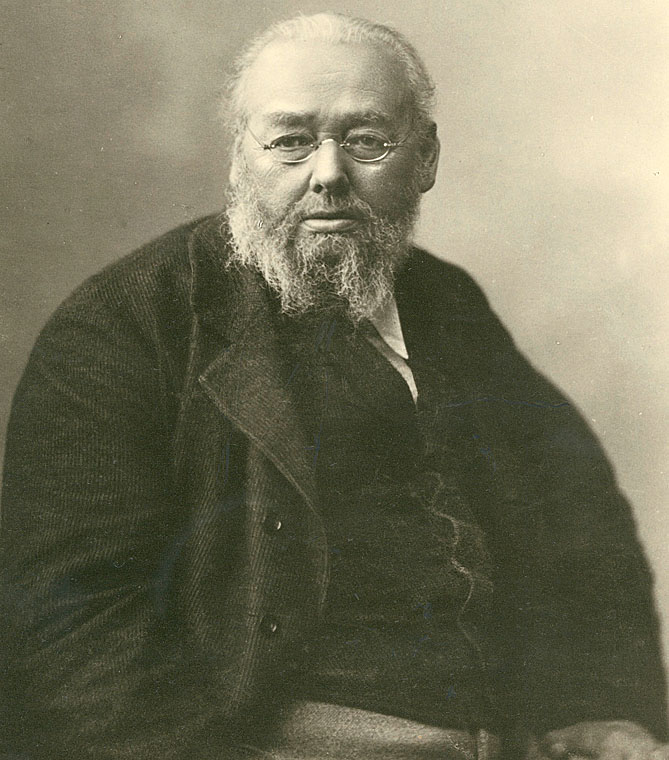
Rudolf Koller was a Swiss painter. He is associated with a realist and classicist style, and also with the essentially romantic Düsseldorf school of painting. Koller's style is similar to that of the realist painters Gustave Courbet and Jean-Baptiste-Camille Corot. Considered Switzerland's finest animal painter, Koller is rated alongside George Stubbs, Rosa Bonheur and Théodore Géricault. While his reputation was based on his paintings of animals, he was a sensitive and innovative artist whose well-composed works in the "plein air" tradition, including Swiss mountain landscapes, are just as finely executed.
He has been described as "the painter of the Swiss national animal", because of his paintings of cows in Swiss landscapes. He is considered, along with Frank Buchser and Gustave Eugène Castan, to be one of the most important Swiss painters of the 19th century. The Gotthardpost, or The St Gotthard Mailcoach, is one of his most famous paintings. It depicts a mail coach, drawn by white horses, speeding along a mountain road.
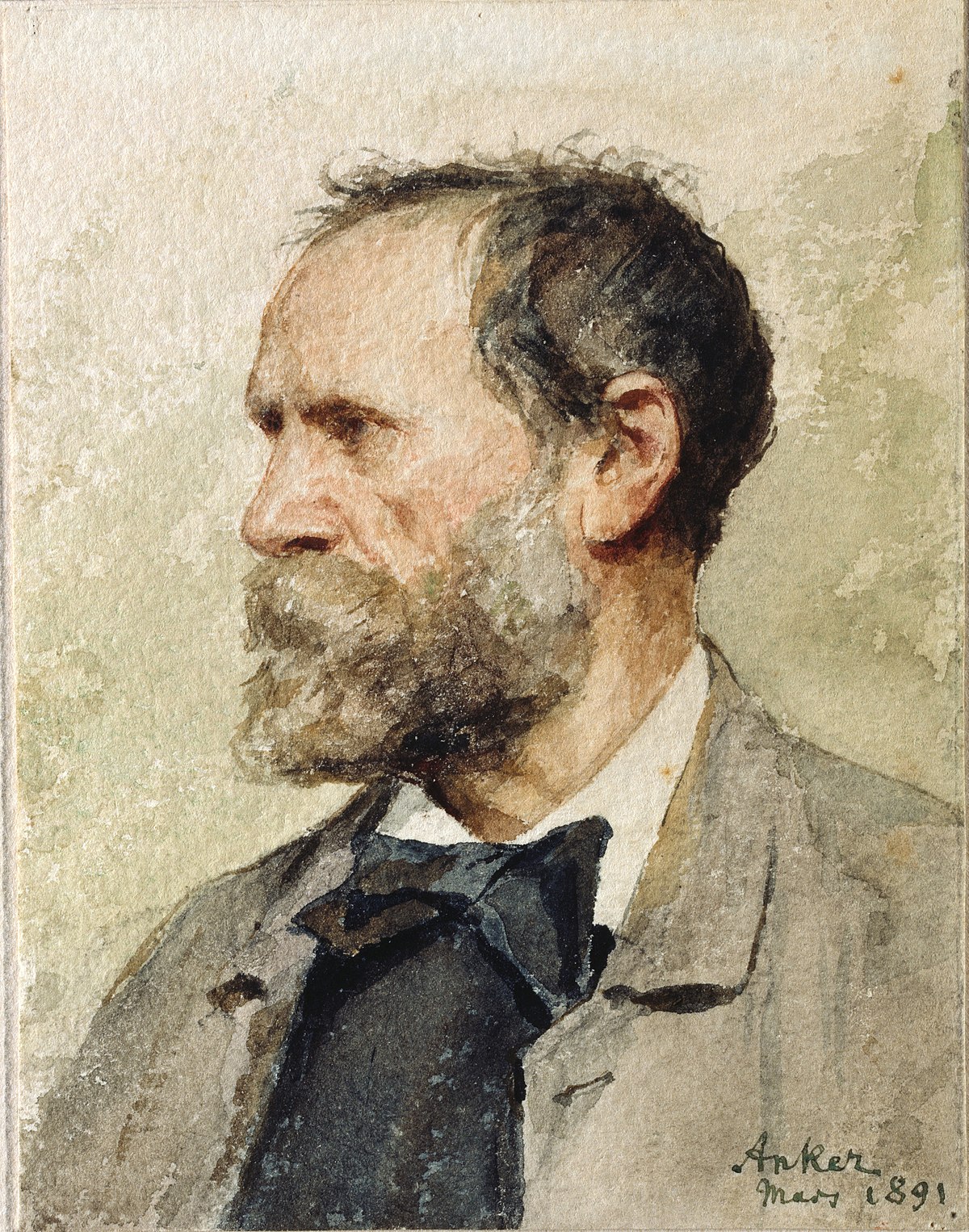
Albert Samuel Anker was a Swiss painter, gesture painter and graphic artist.
Albert studied at the École Nationale Supérieure des Beaux-Arts in Paris and exhibited his work at the Paris Salons, where he was awarded a gold medal in 1866. Anker painted many realistic portraits and genre scenes of ordinary Swiss life. In many of them he depicted children, including his own. Thanks to his paintings, Albert Anker was the most popular genre painter of 19th century Switzerland. He also decorated more than 500 earthenware plates for the Alsatian ceramicist Theodor Deck.
Anker was a member of the Grand Council of the Canton of Bern, initiated the creation of the city museum, and held the rank of officer of the Legion of Honor.

Albert Samuel Anker was a Swiss painter, gesture painter and graphic artist.
Albert studied at the École Nationale Supérieure des Beaux-Arts in Paris and exhibited his work at the Paris Salons, where he was awarded a gold medal in 1866. Anker painted many realistic portraits and genre scenes of ordinary Swiss life. In many of them he depicted children, including his own. Thanks to his paintings, Albert Anker was the most popular genre painter of 19th century Switzerland. He also decorated more than 500 earthenware plates for the Alsatian ceramicist Theodor Deck.
Anker was a member of the Grand Council of the Canton of Bern, initiated the creation of the city museum, and held the rank of officer of the Legion of Honor.

Auguste Frédéric Dufaux the Younger was a Swiss painter and sculptor.
Auguste's father, painter and sculptor Frédéric Guillaume Dufaux (1820-1872), taught him to draw, then he entered the Geneva School of Fine Arts, continued his studies in Paris and Florence.
Dufaux painted lovely female portraits in genre and intimate scenes, children playing, and many depictions of nude women, often near water. He lived in Paris from 1876 to 1891 and participated in the Salon des Artistes Français. From his travels in Egypt and Algeria, Dufaux brought back paintings of local exotic subjects. Dufaux also worked on a panoramic painting of the French Army's entry into Le Verrière and executed several sculptures of famous personalities.
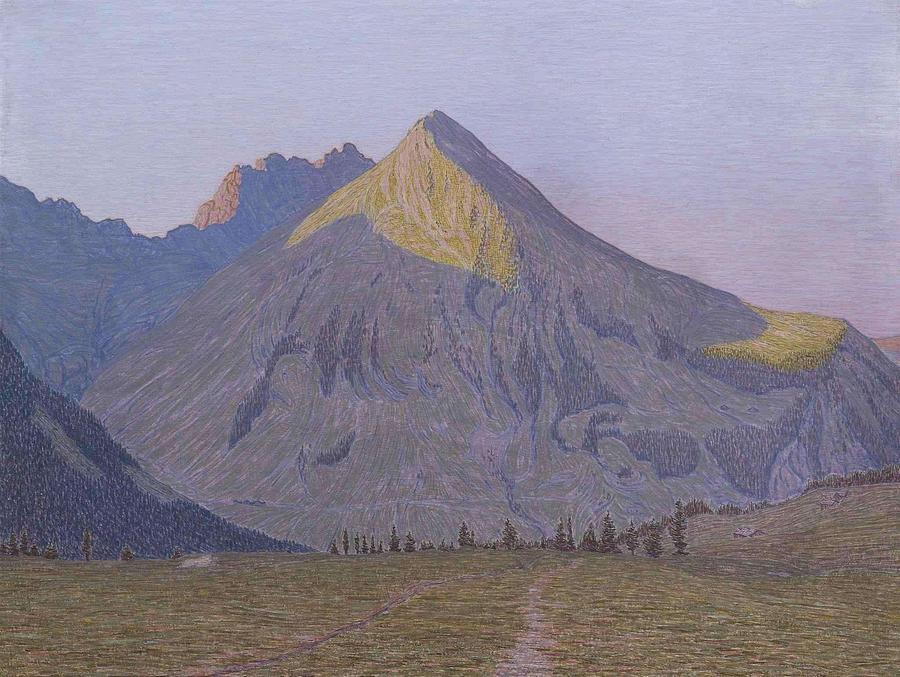
Alexandre Perrier was a Swiss landscape painter; mostly of Alpine mountain scenes. He also created a few portraits.
His early paintings use a Pointillistic technique, but his later ones show a broader brushstroke. He did not follow the general practice of painting en plein aire, preferring to make sketches on site and producing the canvases in his studio.
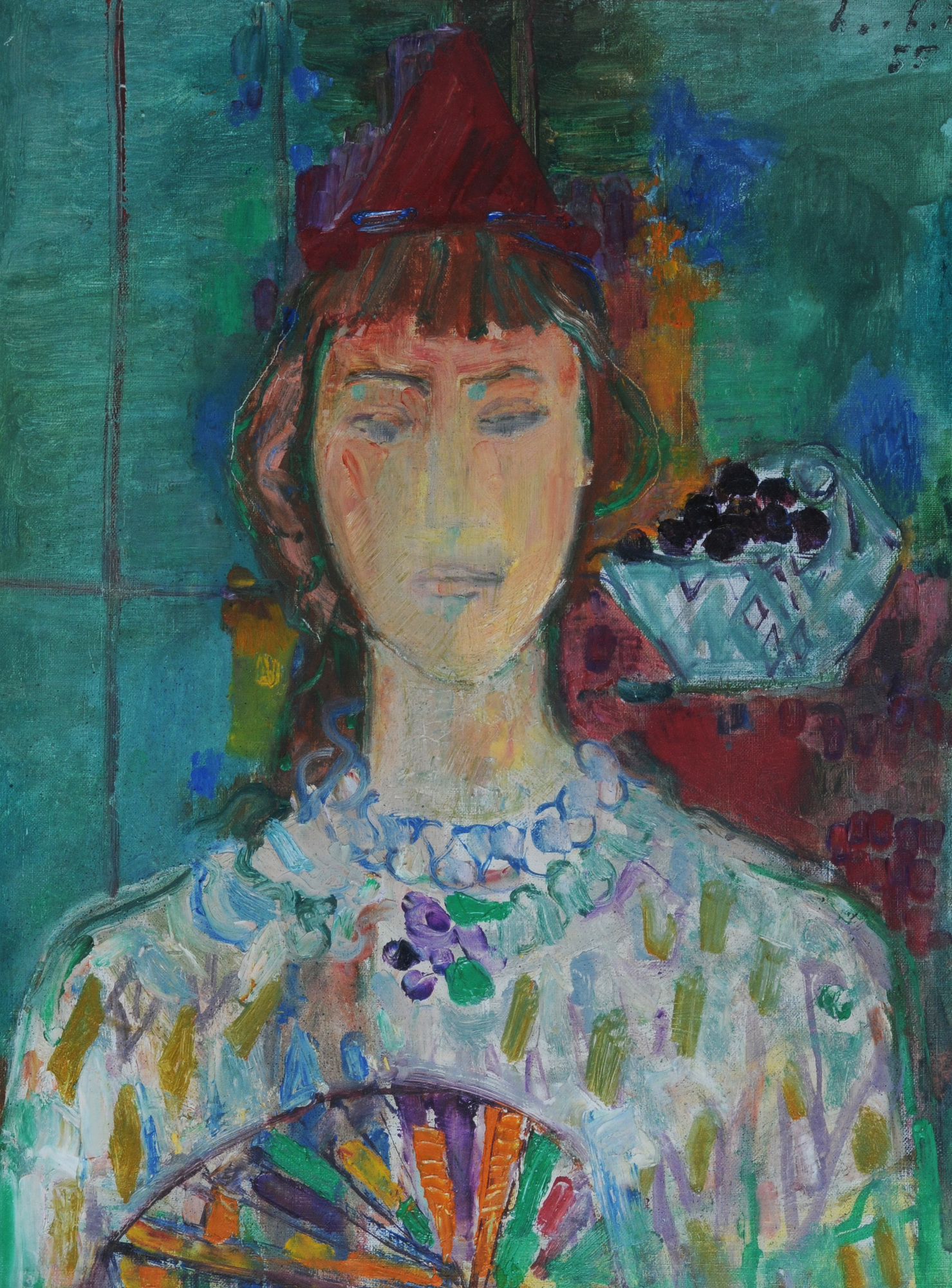
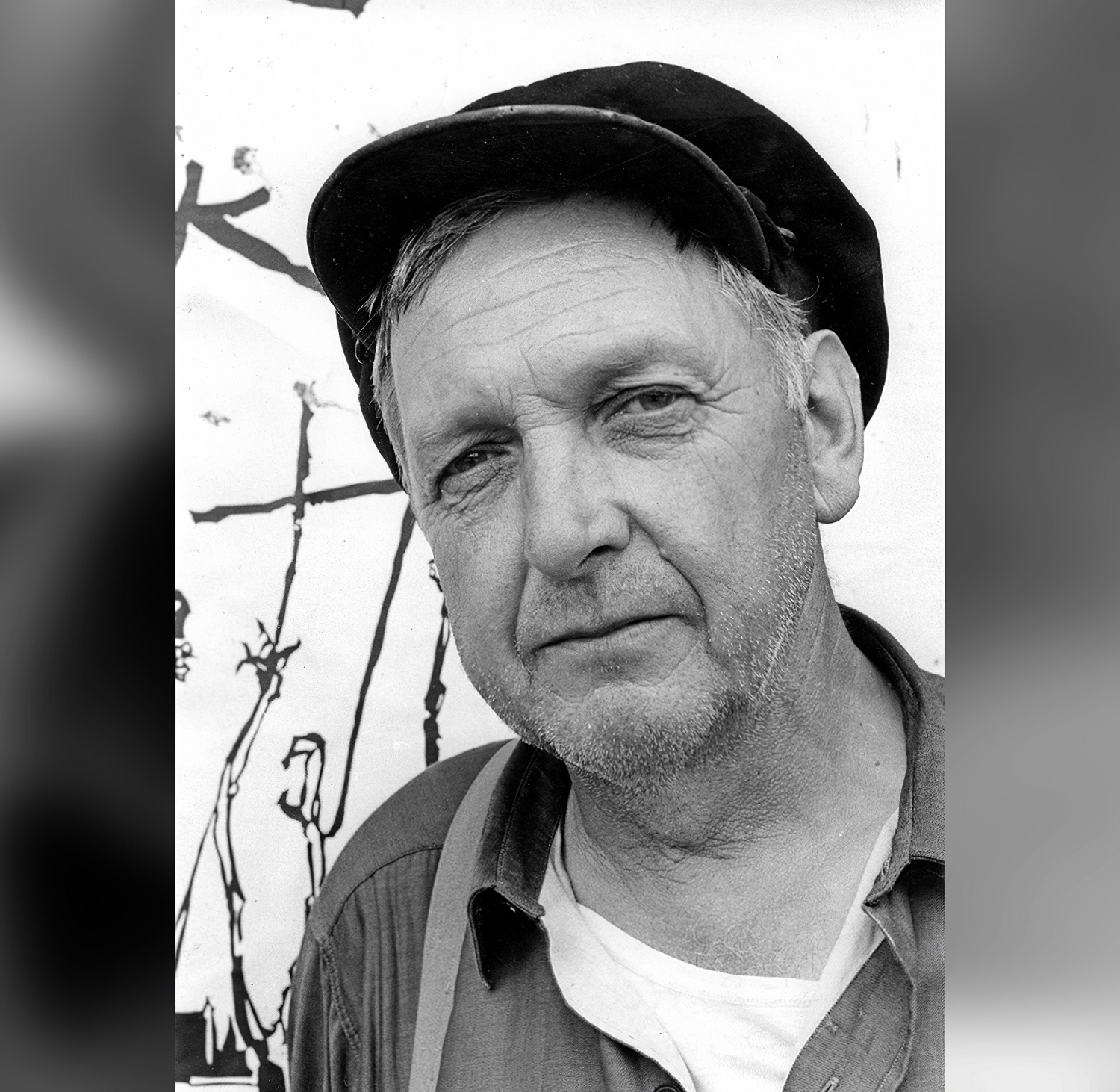
Ernst Stocker, better known as Coghuf, was a Swiss painter, draftsman and sculptor. He designed tapestries and stained glass windows.
Coghuf's work is characterised by abstract forms, bright colours and a sense of dynamic movement. Coghuf's work often conveys emotional depth and explores the relationship between form and space.
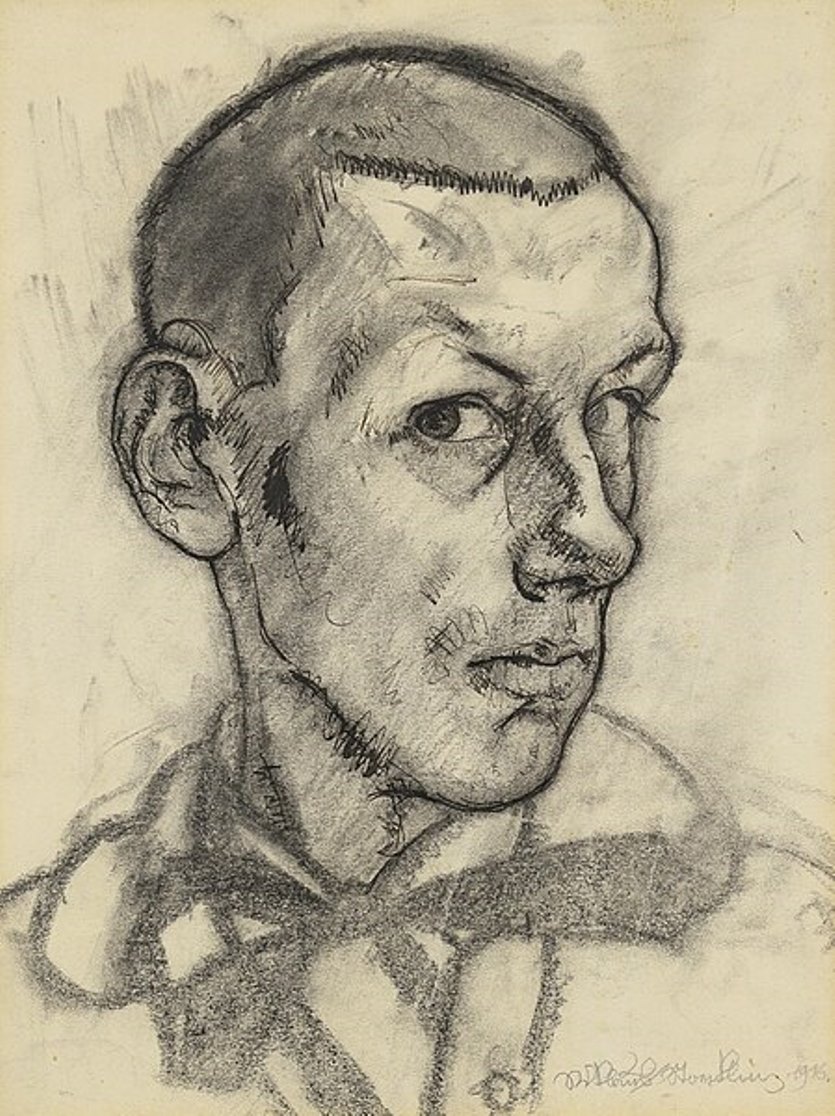
Niklaus Stoecklin was a Swiss painter and graphic artist, representative of the New Objectivity and magic realism.
After the Munich School of Arts and Crafts Niklaus entered the Basel School of Arts and Crafts, worked extensively, actively participated in exhibitions and traveled. In 1917, Stoecklin created his masterpiece Casa Rossa. His favorite genres were still life, portraiture, and landscapes, particularly city views. For many decades, Stoecklin also worked as a poster designer, designing stamps. Some of his posters have become icons of international poster art.

Niklaus Stoecklin was a Swiss painter and graphic artist, representative of the New Objectivity and magic realism.
After the Munich School of Arts and Crafts Niklaus entered the Basel School of Arts and Crafts, worked extensively, actively participated in exhibitions and traveled. In 1917, Stoecklin created his masterpiece Casa Rossa. His favorite genres were still life, portraiture, and landscapes, particularly city views. For many decades, Stoecklin also worked as a poster designer, designing stamps. Some of his posters have become icons of international poster art.
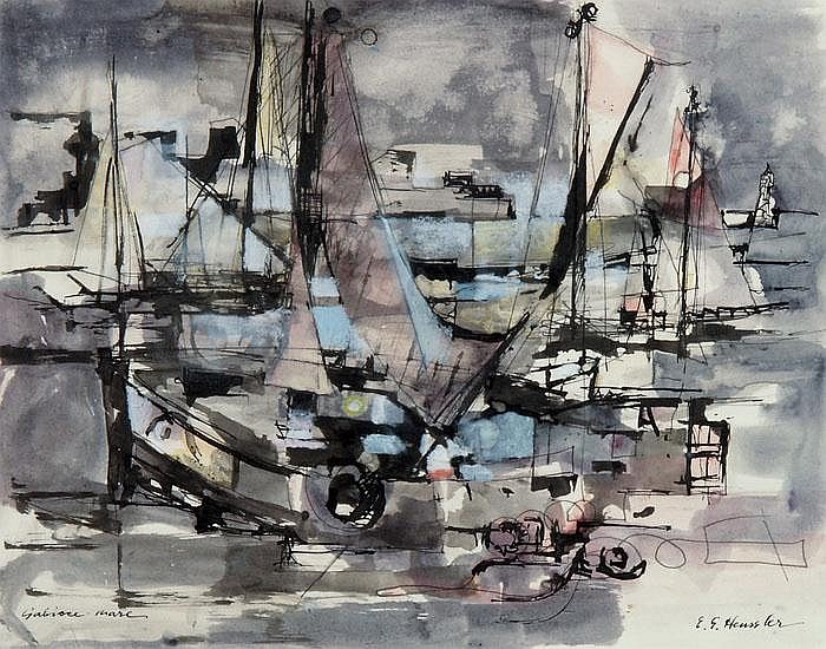
Ernst Georg Heussler was a Swiss painter, graphic designer and sculptor.
A versatile artist, Heussler worked in many techniques - prints and woodcuts, oil and watercolor, and large-scale murals. He painted Art Nouveau portraits and graphic still lifes, nude paintings and abstract landscapes.
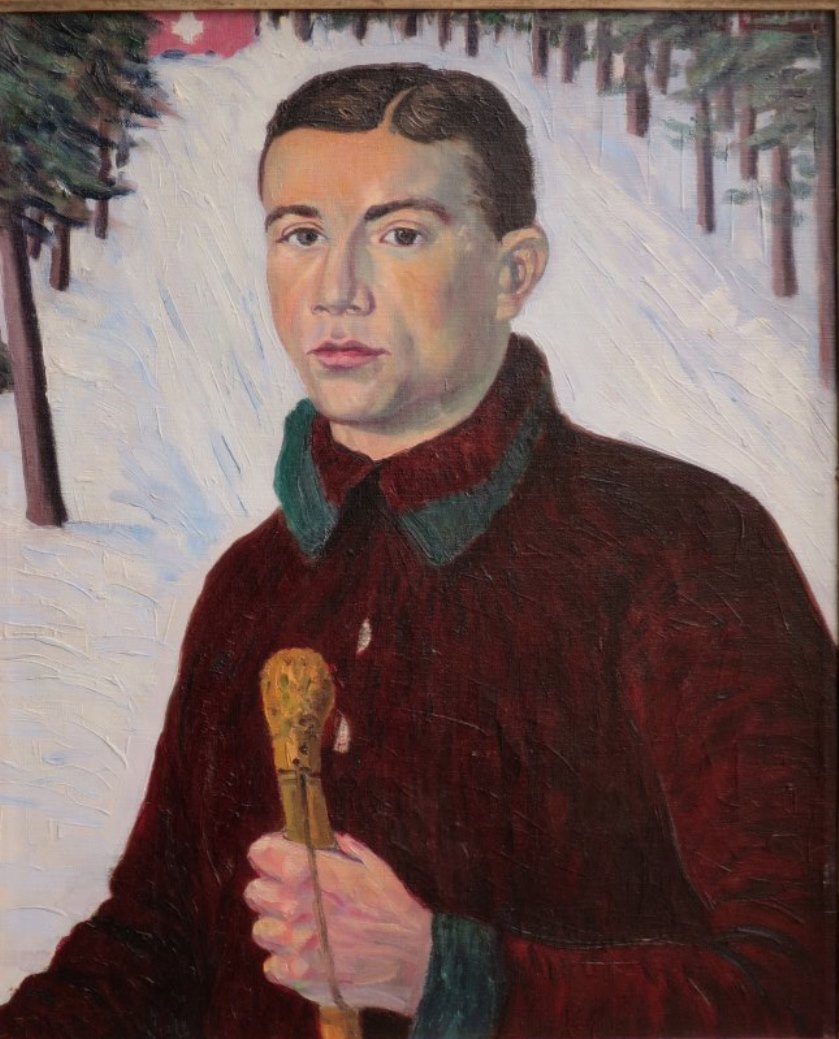
Jean Lehmann was a Swiss painter, graphic artist and sculptor.
Jean graduated from the Lucerne School of Applied Arts, studied at the Academy of Fine Arts in Venice and at the Academy of Fine Arts in Munich. Lehmann worked at the Glacier Gardens in Lucerne and as a guide in mountain hotels, so many of his paintings are mountain snow-covered landscapes. The artist was particularly fond of painting rustic landscapes, rural scenes of quiet life, and he also created portraits and still lifes in a wide variety of techniques. He also painted a series of watercolors and chalk drawings of Swiss traditional costumes.
Lehmann also worked in the advertising business, creating posters for sporting events and travel companies.
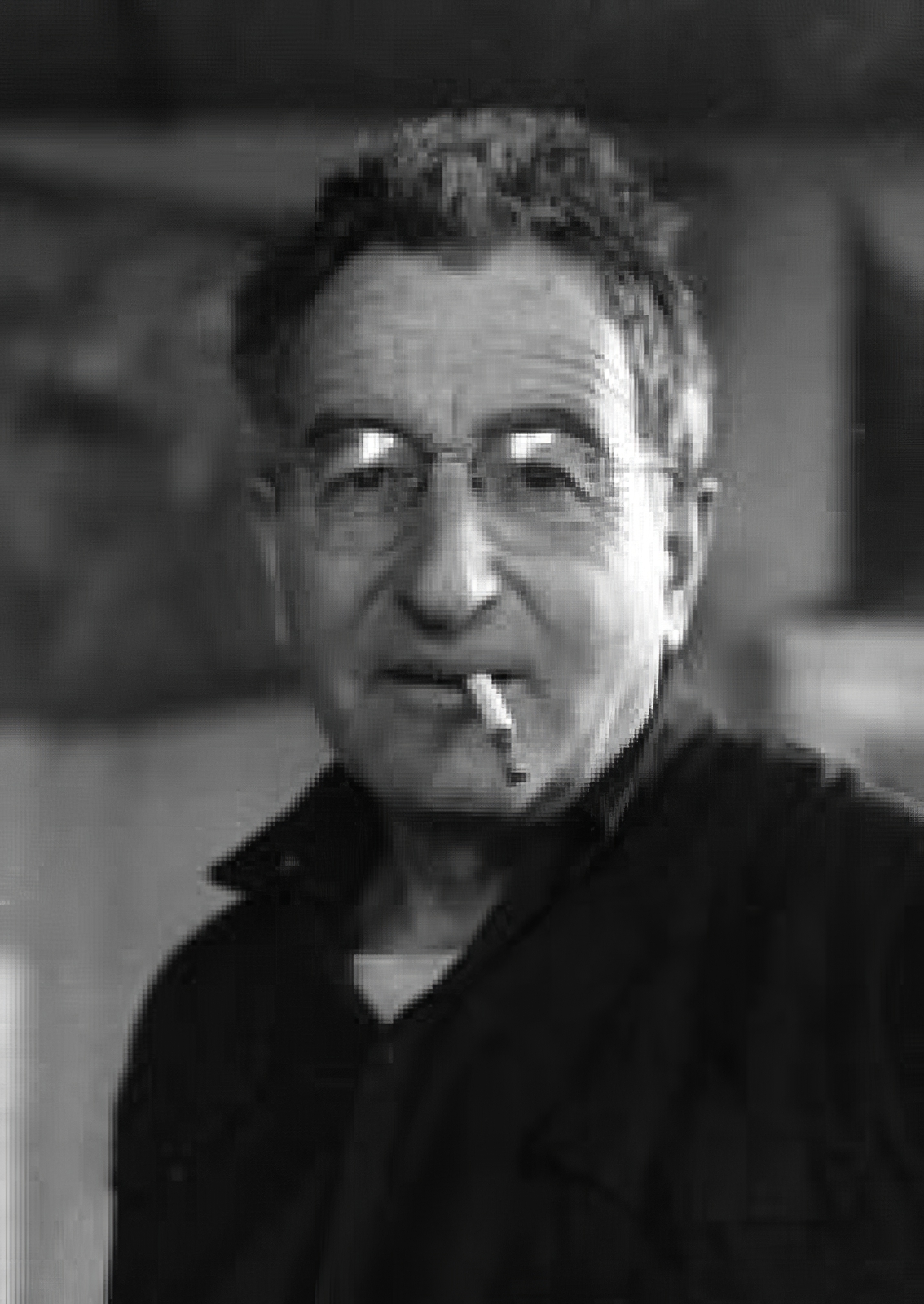
Willy Leopold Guggenheim, known as Varlin, was a Swiss painter. His figurative work emphasized the fragility of everyday life.
Varlin was friends with Hugo Loetscher and Friedrich Dürrenmatt, and painted them.
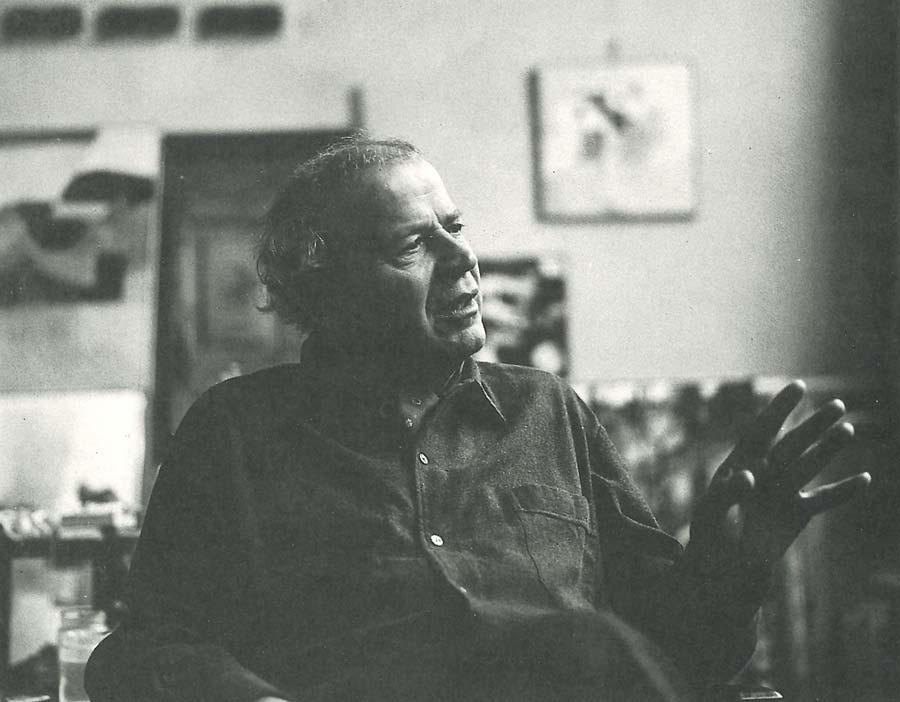
Teo Eble was a Swiss abstractionist painter and graphic designer.
Eble studied at the Academy of Fine Arts in Berlin, then taught at the Basel School of Applied Arts from 1931 to 1967. In 1933 he co-founded the Swiss Group 33, an anti-fascist association of artists.
His work was influenced by the realist, objective painting of the 1920s. The subjects of Eblé's early works were landscape paintings and depictions of cities and their life.
In 1934, Eblé began abstract painting and became a prominent artist of the abstract movement in Switzerland and was also recognized internationally. He held exhibitions in France and the United States, in 1958 at the Venice Biennale and in 1959 at Documenta in Kassel. In the 1960s, Eblé created numerous murals in public buildings.
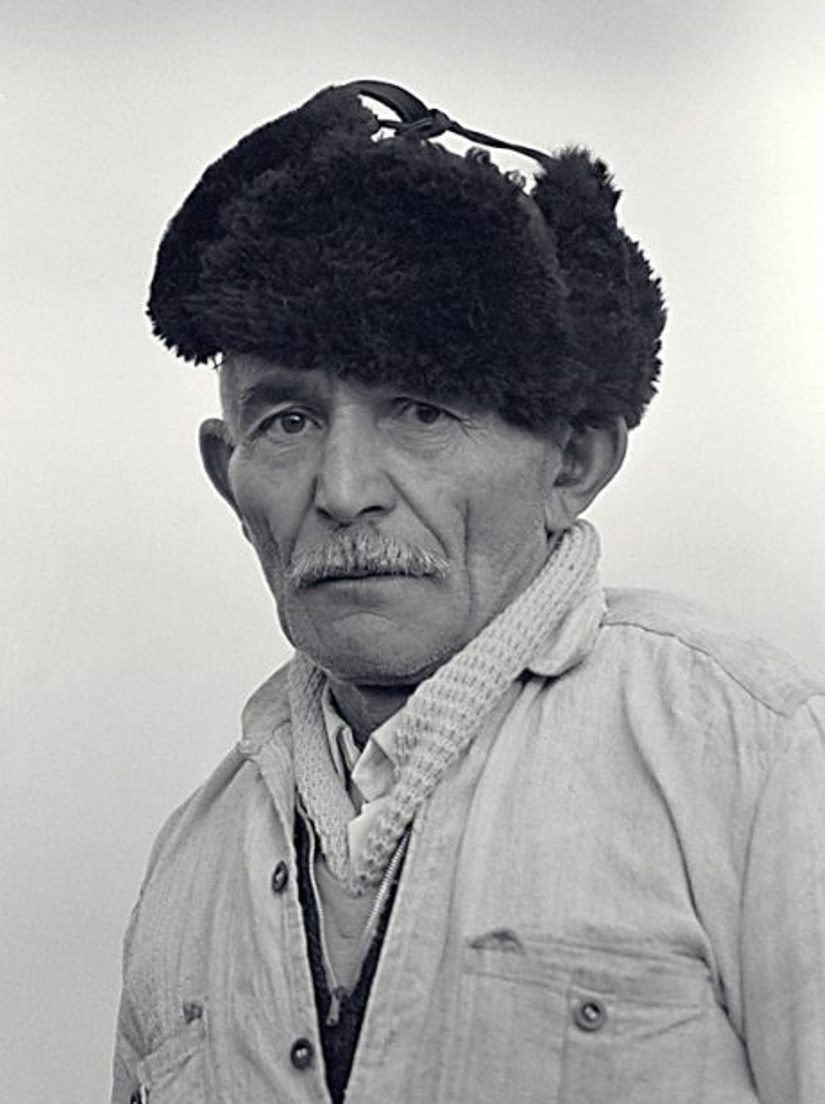
Jakob Sollberger is a Swiss painter and graphic artist, sculptor, photographer and video director.
Initially Jakob was very interested in video and photography, and at the age of 26 he founded his own studio for advertising photography and production of industrial films and TV commercials. A few years later he took up other art forms as well.
Since the early 1990s, Sollberger has taught photography courses at the Zurich Education Center and has created many photographic portraits. In recent years, Jakob Sollberger has also worked on short films on various subjects.






